This was a trip from Lucknow, the capital of Uttar Pradesh, the most populous state in India to Bhopal and the capital of Madhya Pradesh, the biggest state in India. Strangely enough, despite these two superlatives, these two state capitals were historically not that well served via transport . This train itself is of recent provenance. Is it because both cities are more bureaucratic and more politically driven rather than driven by industry?
Anyway, instead of taking two flights, we usually take this overnight train. The only regret is that the earthenware kullar's cups are no longer to be seen anywhere on this journey. What's the fun of travelling on trains without having tea in a kullar and slurping it loudly and dunking Parle G or Marie biscuits in it? Sometimes modernity is a bummer.
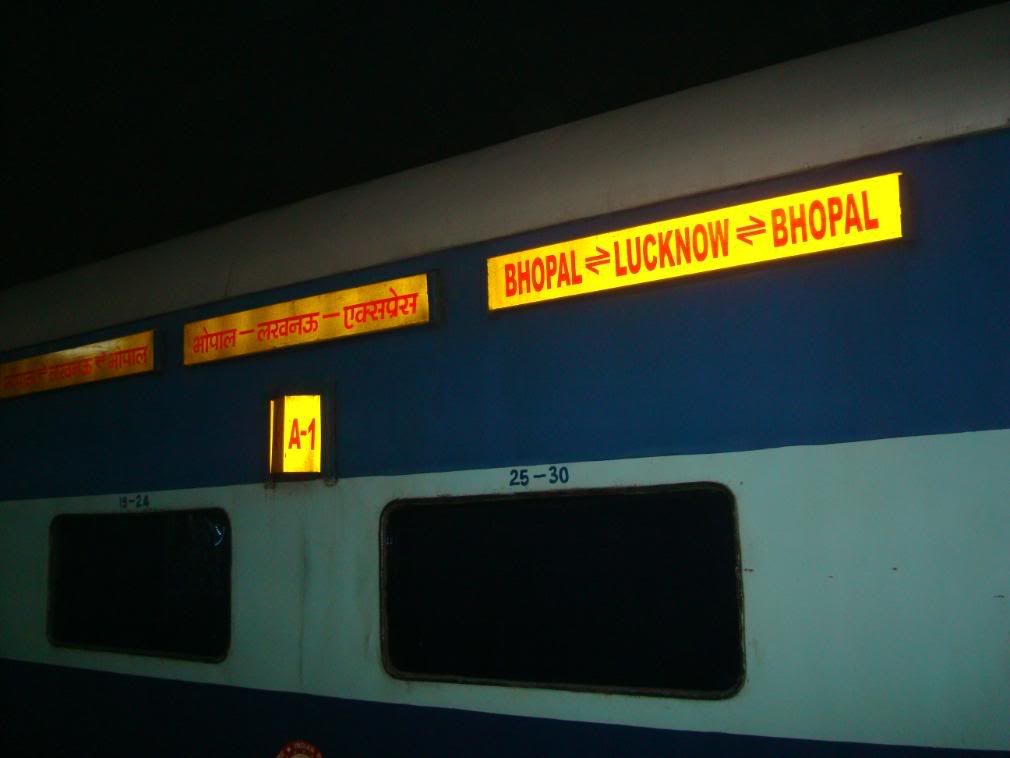
This was an overnight train as you can see. The A1 sign is an indicator that the coach is an air-conditioned car and you can see the serial number of the coach. You might be able to see the berth numbers stenciled above the window as well. The windows are darkened to keep the cabin cool in the sweltering Indian plains, even in winter.

One very interesting aspect that I have noticed around Indian railway stations is the prevalence of advertisements relating to STDs. Lucknow station was no stranger, with a giant bill-board right outside the entrance of the station, proudly advertising medical services to treat all kinds of sexual medical problems. Hmm. Is that because railway stations are population hot spots or because they are anonymous? But then, we do not then find them at bus stations. Curious, I am not sure why that is the case.


Railways are the major artery through which goods flow across India. Whether packed in cardboard boxes or well packed in wooden boxes, they will go across India on these steel arteries of India.
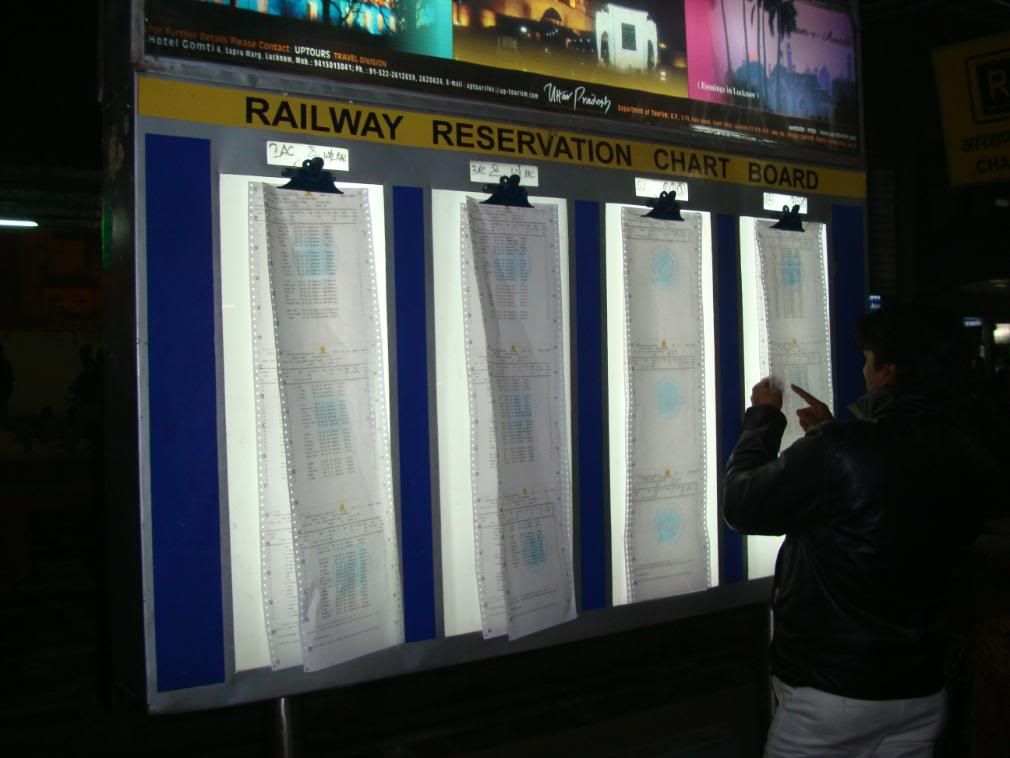
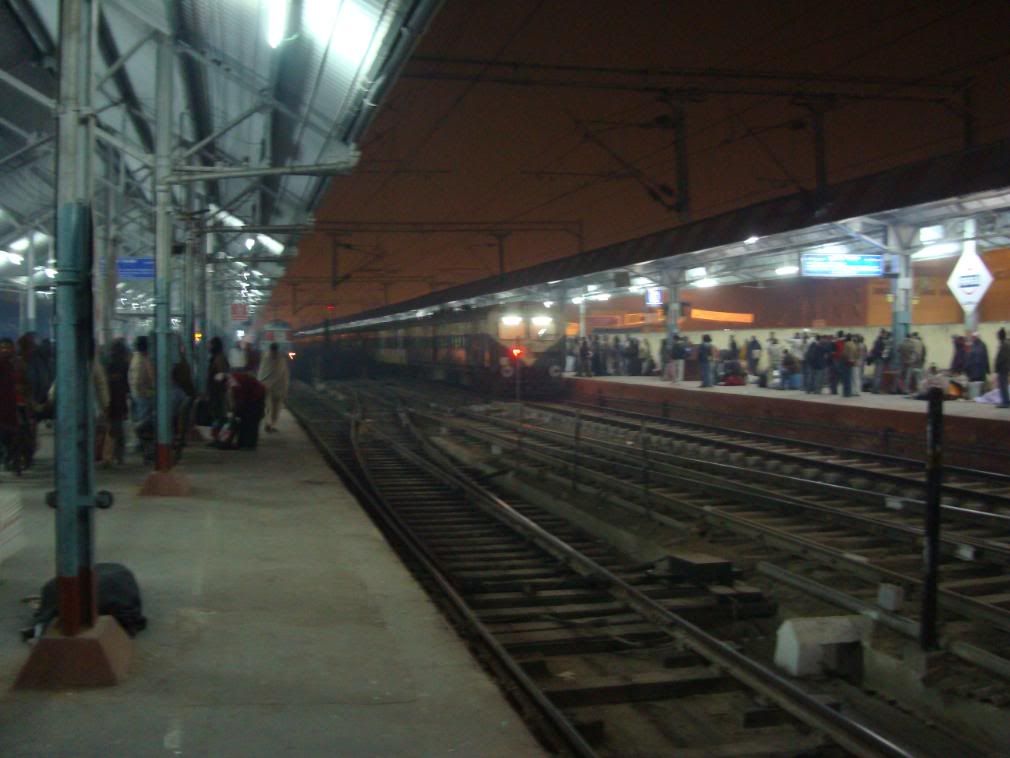
On the left, you will see the familiar reservation charts. At one point in time, when there still was no or very little computerisation, these charts usually would have a huge huddle around them, everybody trying to make sure that what was printed on their tickets is what is being shown on the reservation charts. One good thing about automated reservations, I guess, is that the scrum is absent.
Mind you, that list was also great when I was young, you could check out the, erm, potential scene in the train. Many an interesting assignation have matured from that glance at the bogie reservation chart. And here's a train on the right pulling into the station, while I am talking about pulling of a different kind.
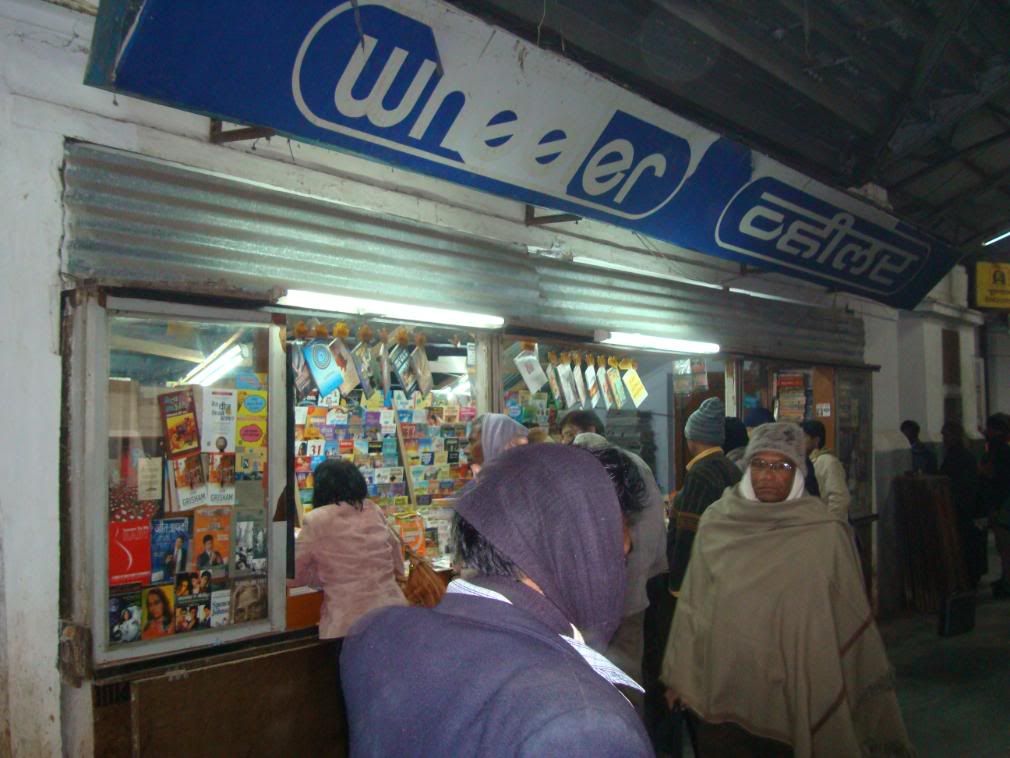
Here's one of the fun parts of travelling on the railways, you get to purchase lovely books. Incidentally, the red book in the shop window has been authored by the lady wife. Many authors and characters were introduced to me via AH Wheeler, Alfred Hitchcock, Hardy Boys, Agatha Christie, PG Wodehouse, RK Nararayan, Nick Carter, and so on and so forth.
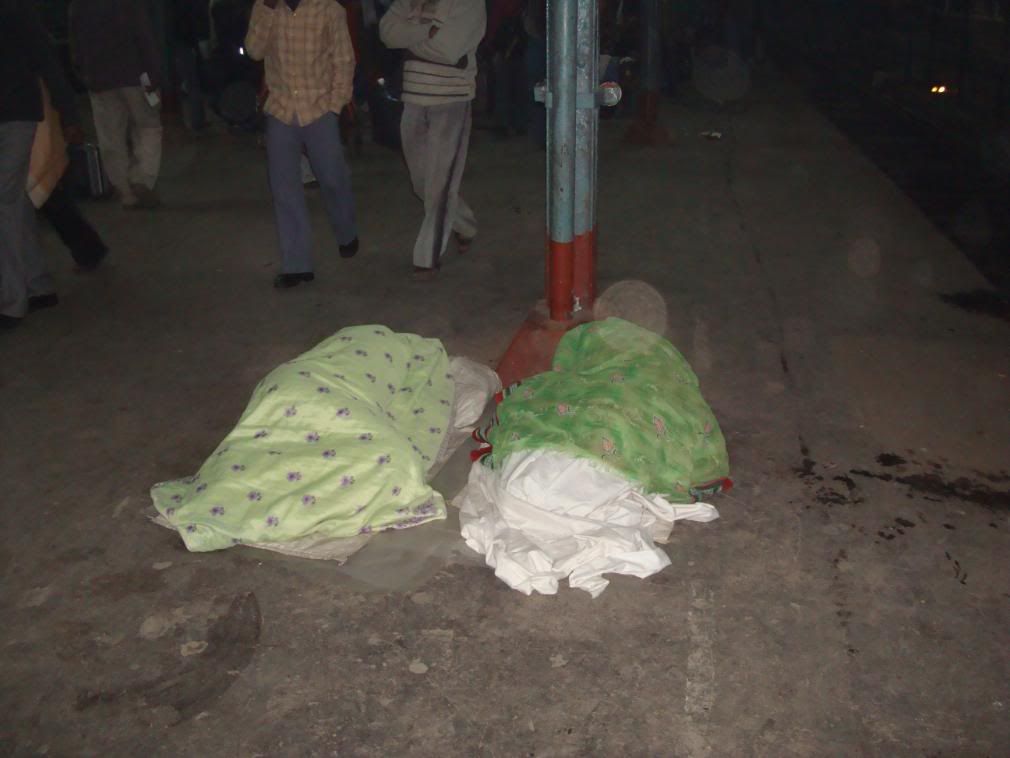

And then you have the rather usual sight of people sleeping on the platform (on the left) or outside the railway station on the pavement (on the right). It was December, and it quite cold. You can see from the clothes that people are wearing, shawls, sweaters, jumpers, scarves and the lot. And now you see people sleeping outside in the cold, on the freezing floor, and all covered up. And they dont even mind the cacophony around them, peacefully sleeping through the night.
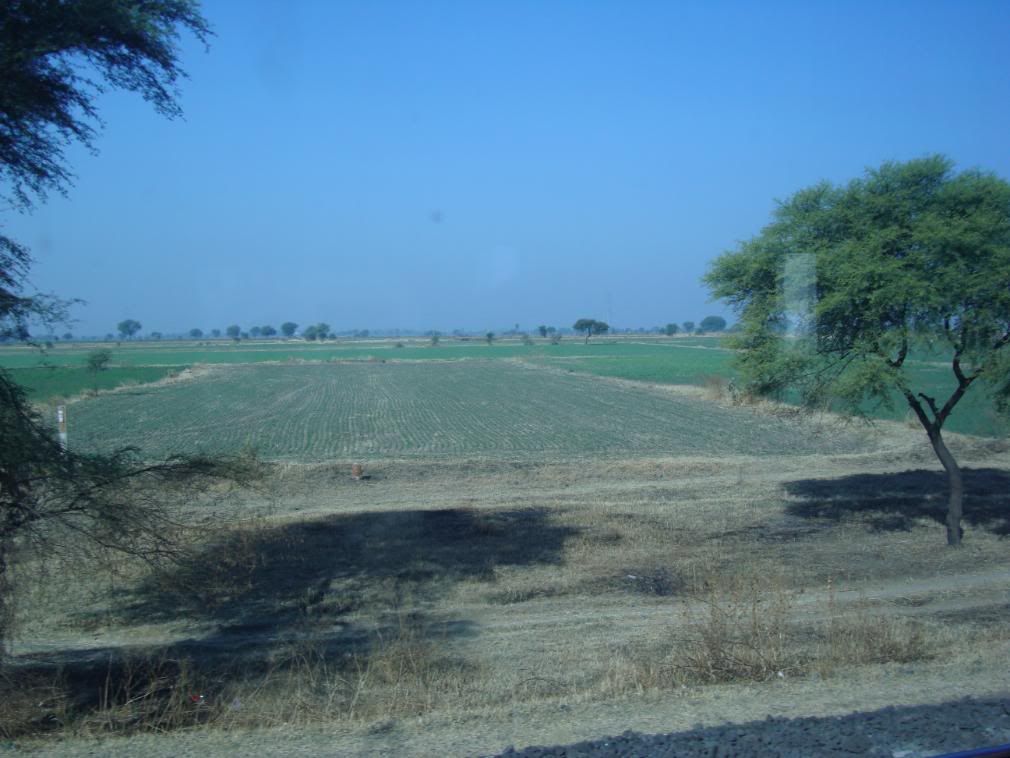
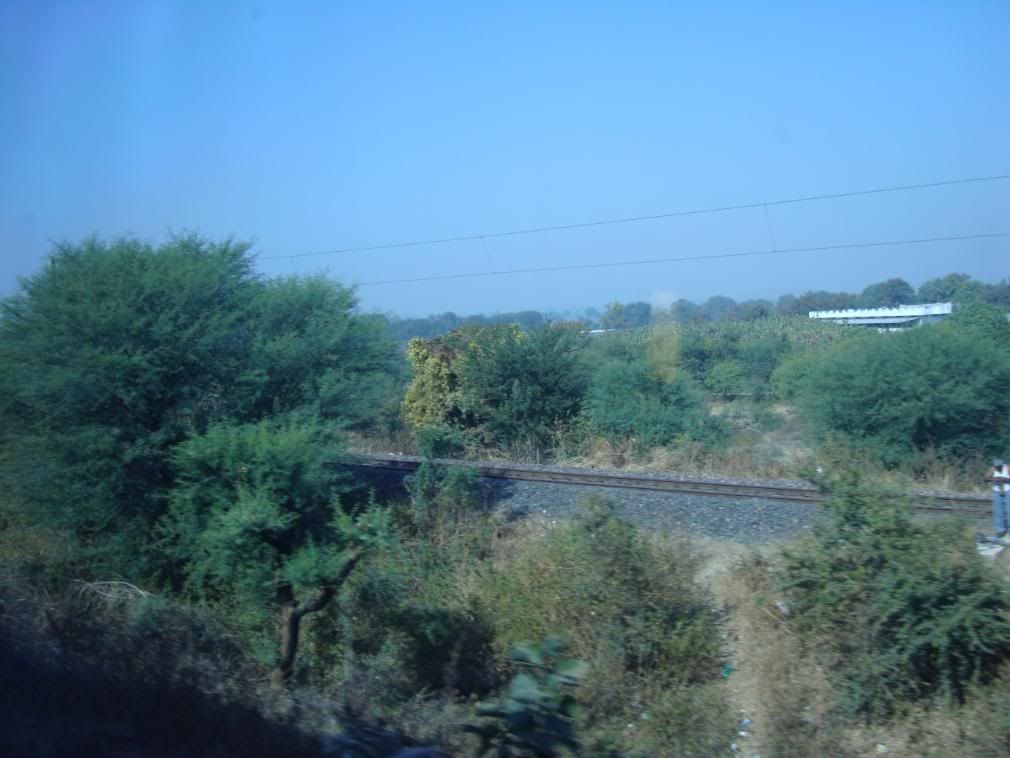


In the morning and deep inside MP territory and you start to have a typical winter landscape. After harvesting the kharif crop, the fields are then planted with the rabi crop. The trees in this region are generally very thorny, they have to be, because the poxy goats rage all over the place.
Another aspect of these trees is that they actually do not have much wood inside them given their size. Which is another reason for their survival, otherwise they would be cut down for firewood. Finally, these trees are quite happy with near drought conditions, content to grow with a miniscule amount of water. As you can see from the picture on the right, this is going over one of the major rivers in MP and it is already down way below the pillars. In the monsoon time, the water would be half way up the pillars.

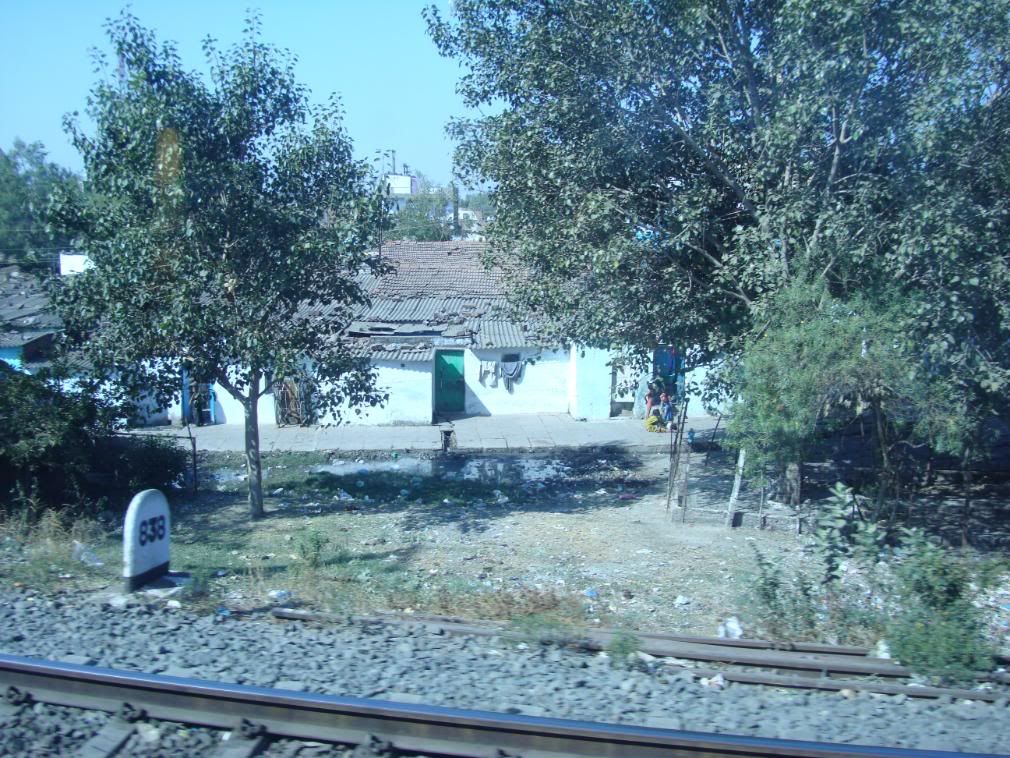

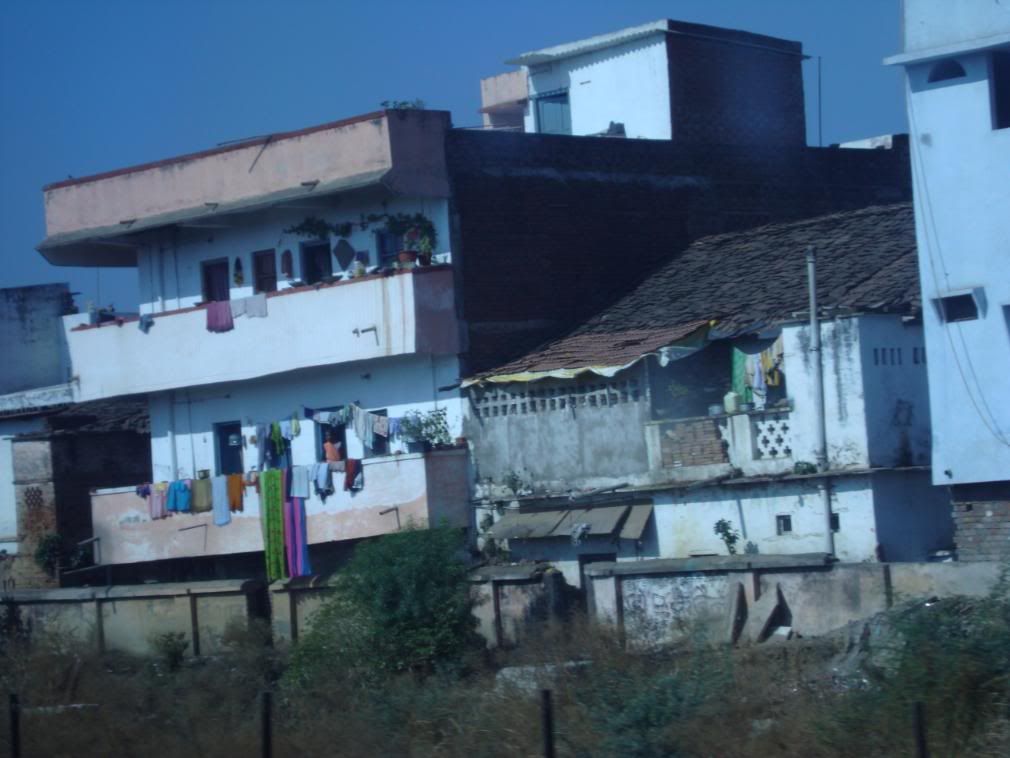
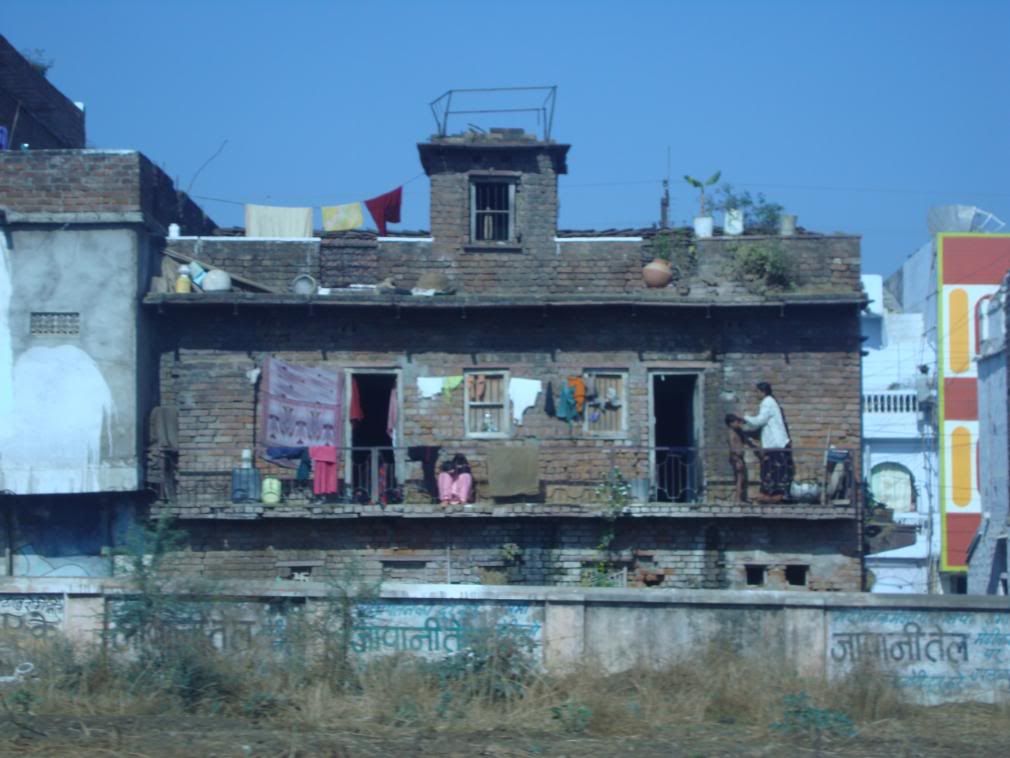
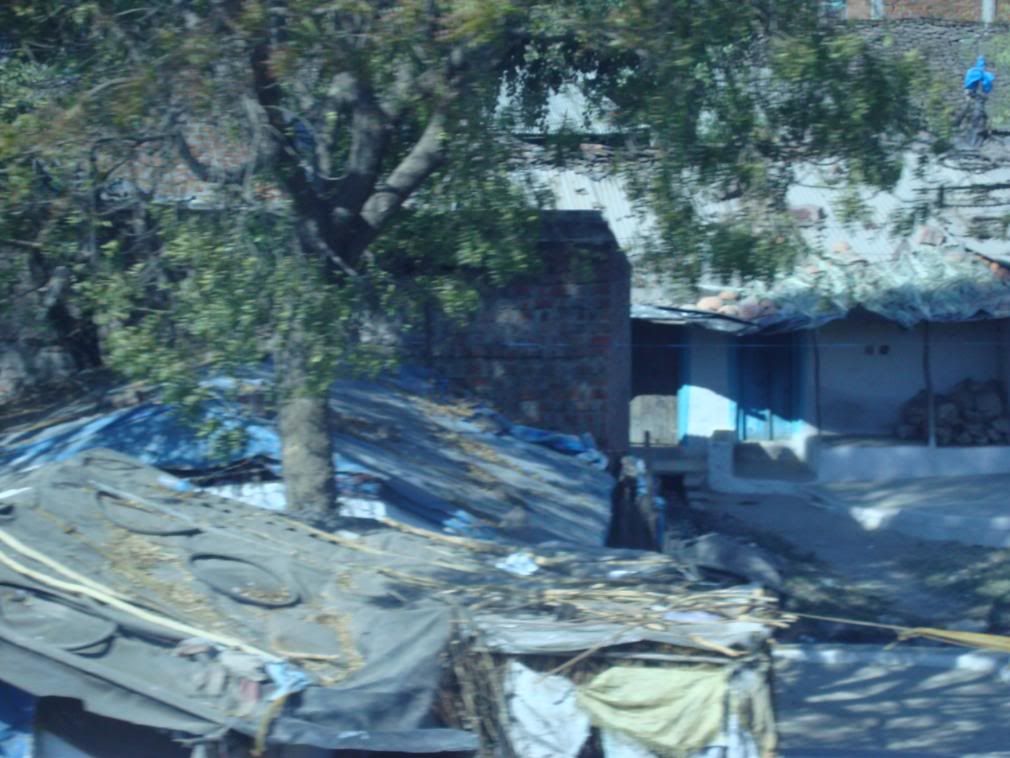
Passing a small town. Fairly typical mixture of mud houses and brick construction, without much imagination either in the architecture, straight up and down, boxy construction. Although as one can see on the above bottom right photograph, the fact that a tree is growing in the middle of the house is never a problem.
But one can see the entire life being played across those balconies, whether its being given a bath, or sitting and studying, or drying clothes or the tragedy of Indian countryside, plastic bags littering the ground.
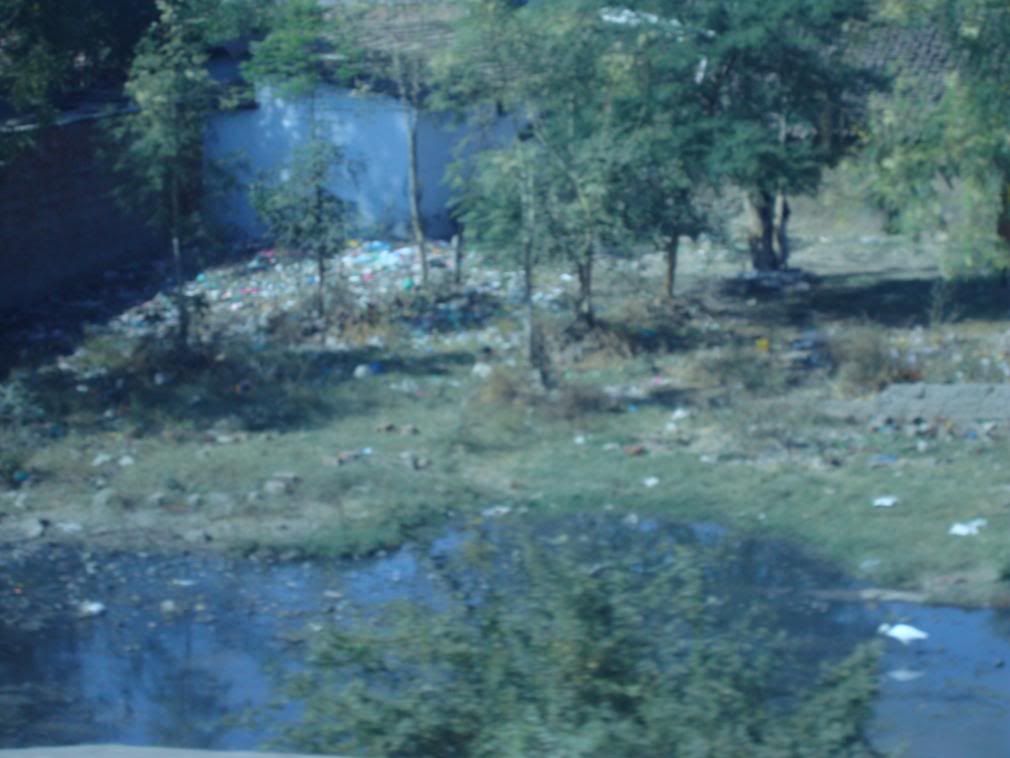
See this small stream, filthy, covered with scum, the banks covered with those poxy plastic bags. What can you say about them but to sigh?

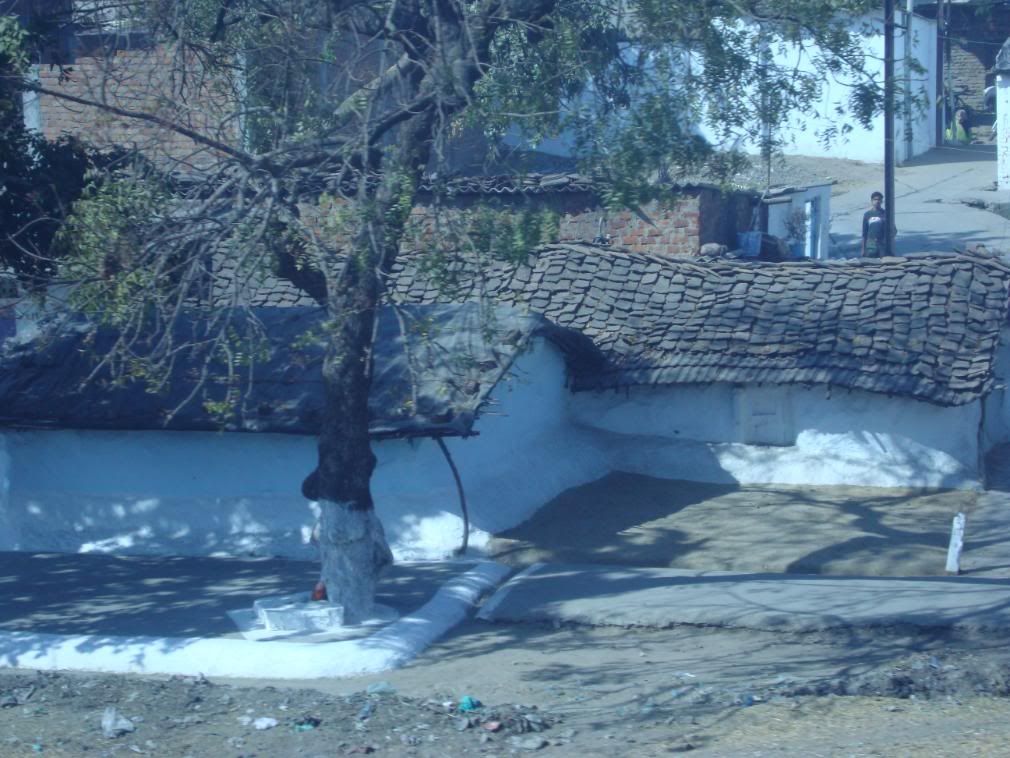
But we usually do not have a problem in keeping our temples clean and tidy. Whether it is a huge white washed temple like the one on the left or a tiny tiny temple at the base of a tree in a cow-dung washed courtyard on the right, those are well maintained, clean and looking pure. But look closely at the place just outside the low boundary hump of the picture on the right, the ubiquitous plastic bags littering the floor. Absolutely an eyesore.
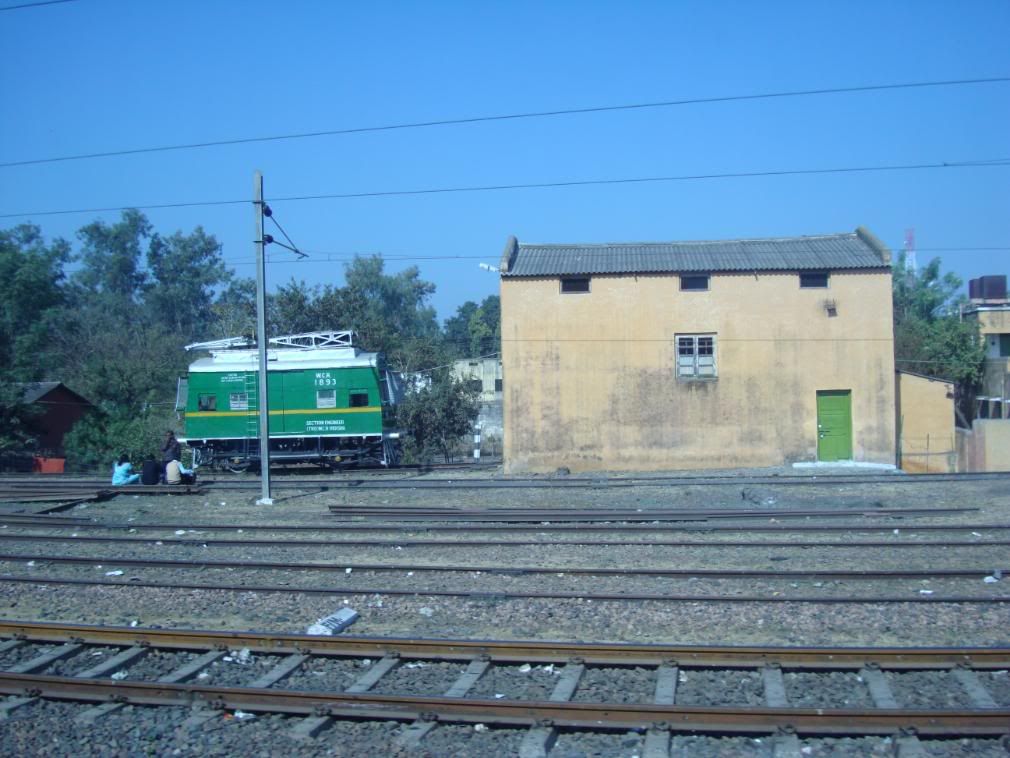
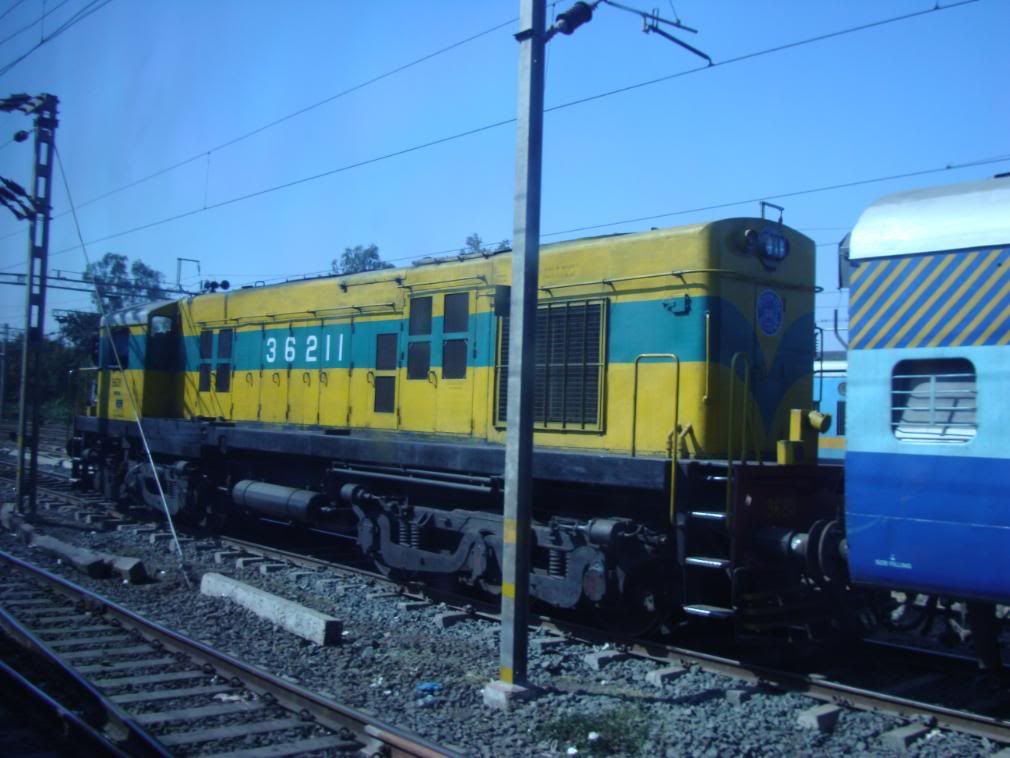
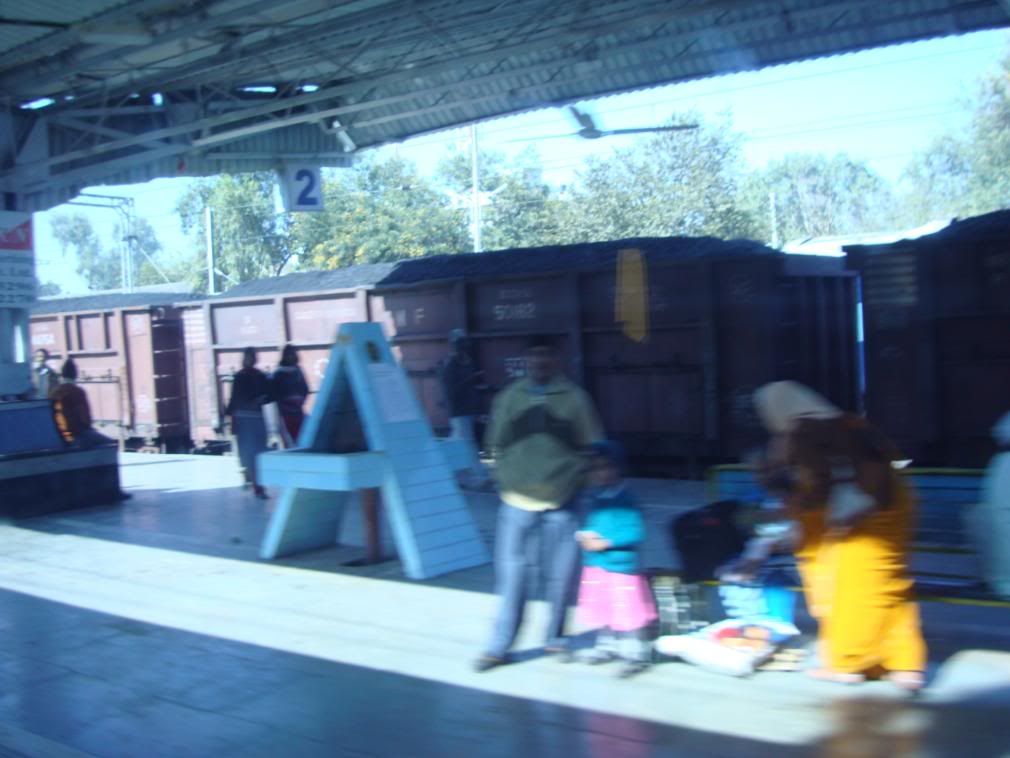


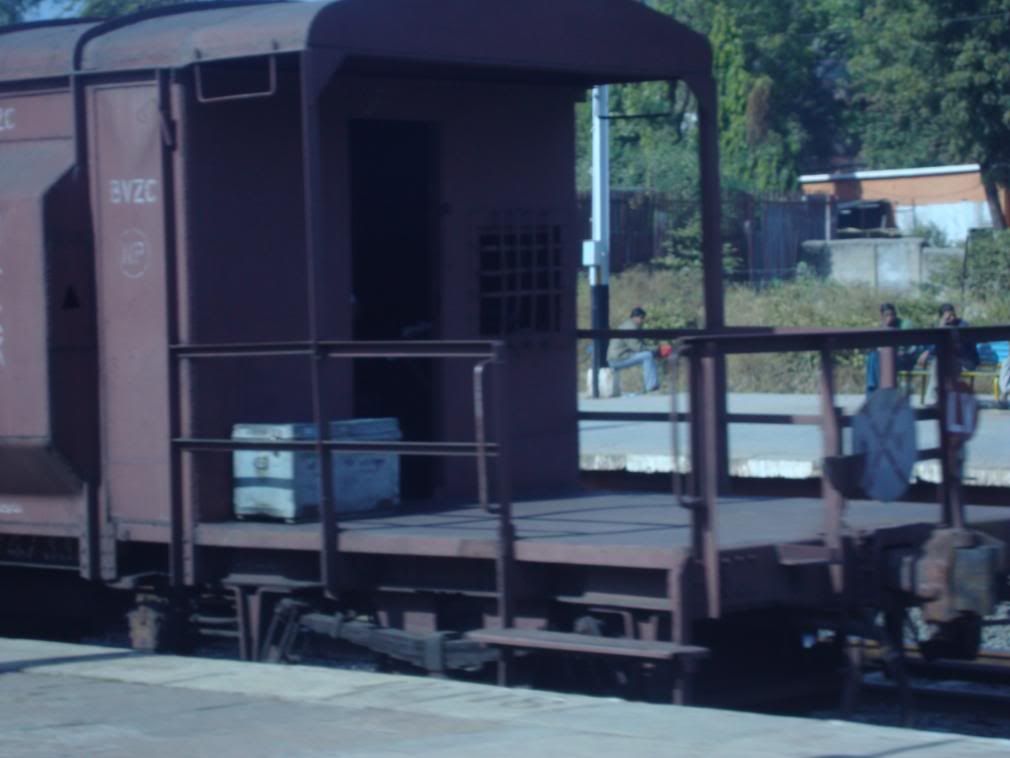
Now we see some views of a small town railway station. People are waiting for their train, the A shaped water fountain, a normal diesel train engine and one of the electric, green inspection engines. The kids got very excited about it all, apparently it was something to do with Thomas the Tank Engine.
The last photograph is very evocative to me personally. That is the other end of a train, also called as the brake or guard van. These vans contain a very Spartan bed which is the living and working quarters for the train guard. He is usually accompanied by his trunk (see that white box thing in the front), which has his name and home station stenciled on it. And they have three flags, white, red and green.
In the days where radio communications was not yet there (not that that exists right now, curiously enough, some guards communicate with each other, their train drivers, and signallers using their own mobile phones, funny, no?), they would use these flags to communicate with the driver or track repairmen or signallers. You can still see the guards, standing at the end, with a flapping flag held in their hands, when the train passes a signal box. It was also called as a brake van because in certain old trains, the chap would help the train's control by utilising the brakes on the brake van.
When I was a little boy, I once thought of having that as a career, what a great job, to be able to travel across the world, see great views, get to sit and read and not too much of the great unwashed herd bothering you way back in the train. Hmm, perhaps I should explore this idea again! :).
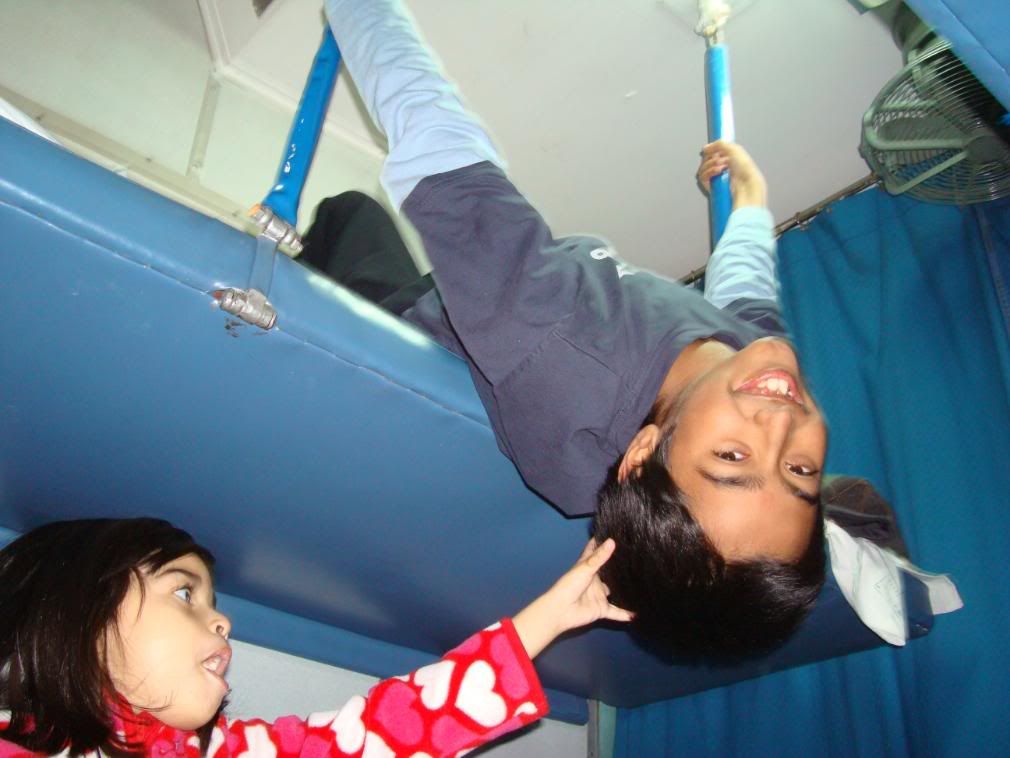
And here are two cheeky monkey's inside the train, swinging around like little chimps.


Approaching Bhopal Station and noticing the familiar sight of a bunch of young boys playing cricket in the tiny space between two train tracks. The fact that it is between a drain and two train tracks, one side is full of rubbish, backed by a pile of earth, no matter, have flat piece of land, will play cricket. Chak de India indeed.
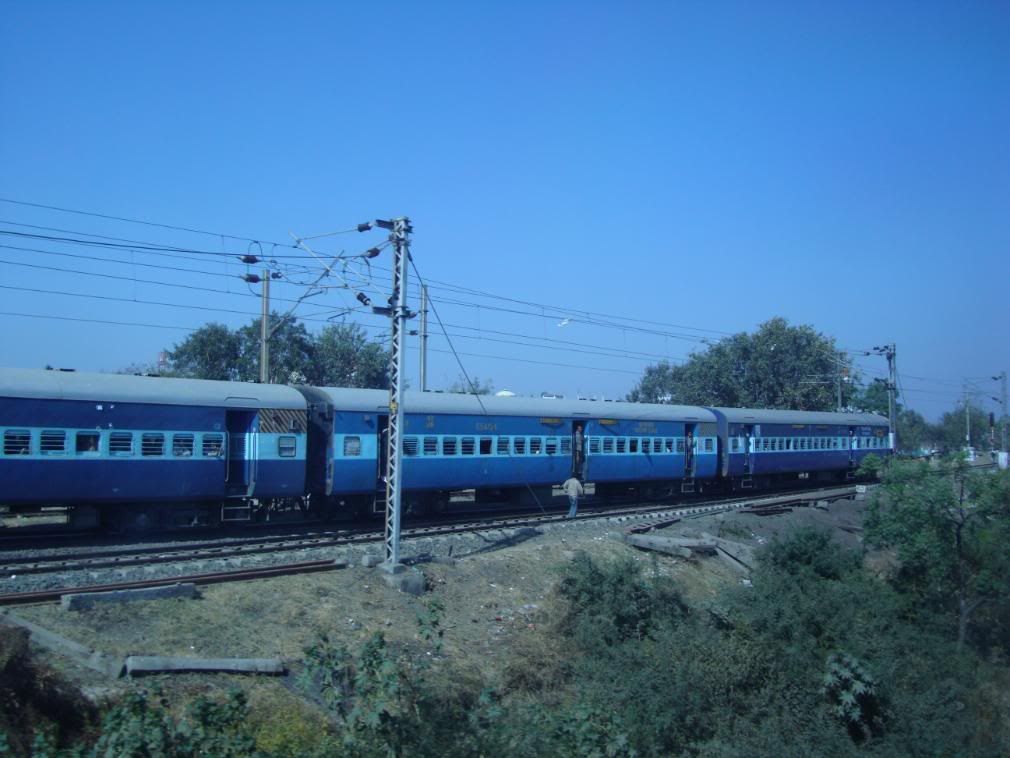
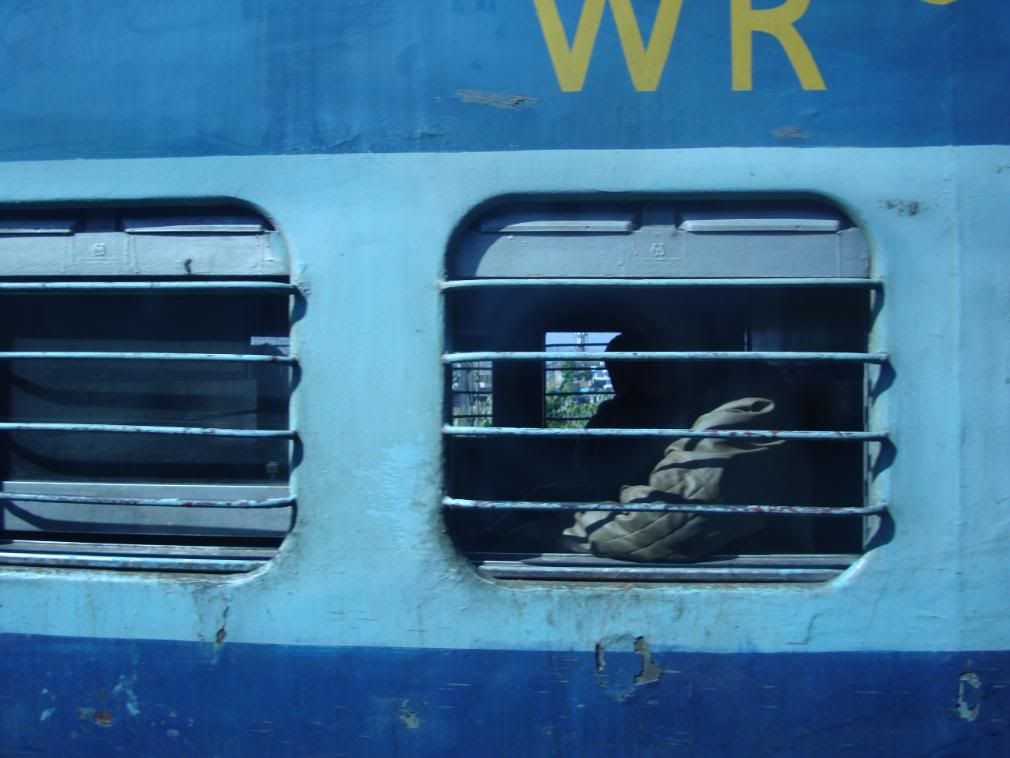
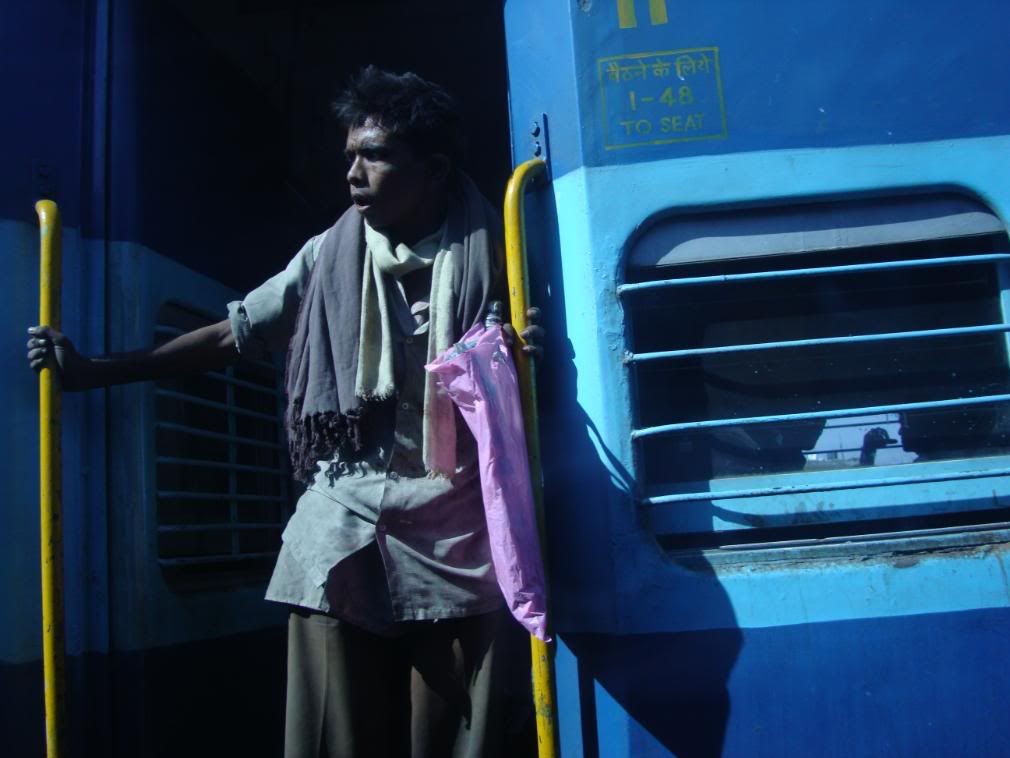

And another train approaching on the track next to us, passengers and hawkers looking forward to disembarking on the platform.
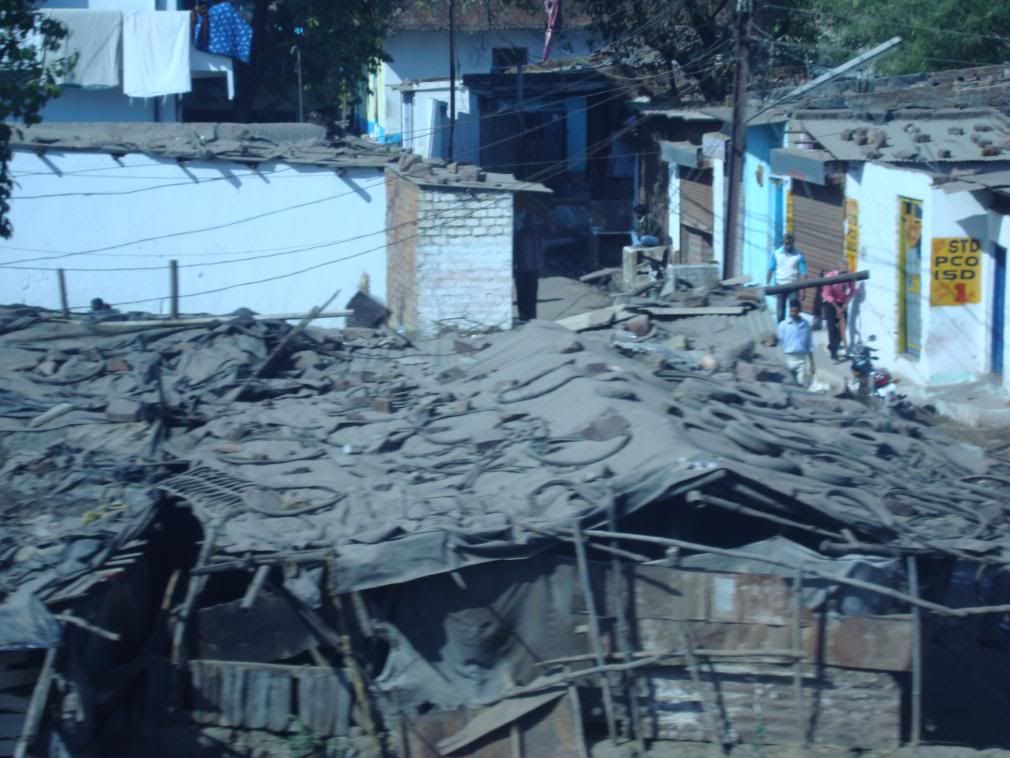
We pass the basti's just before train station. I have some rather sad memories of that place. Every time I pass that area, I am reminded of a monkey which survived that tragedy and I still remember its weeping eyes. Ever seen a monkey mutely weep and cry? It is not good. The area is a wretched area and dirt poor as evidenced by the shanty houses.
Anyway, on the better and bigger things. The end of the journey is in sight.

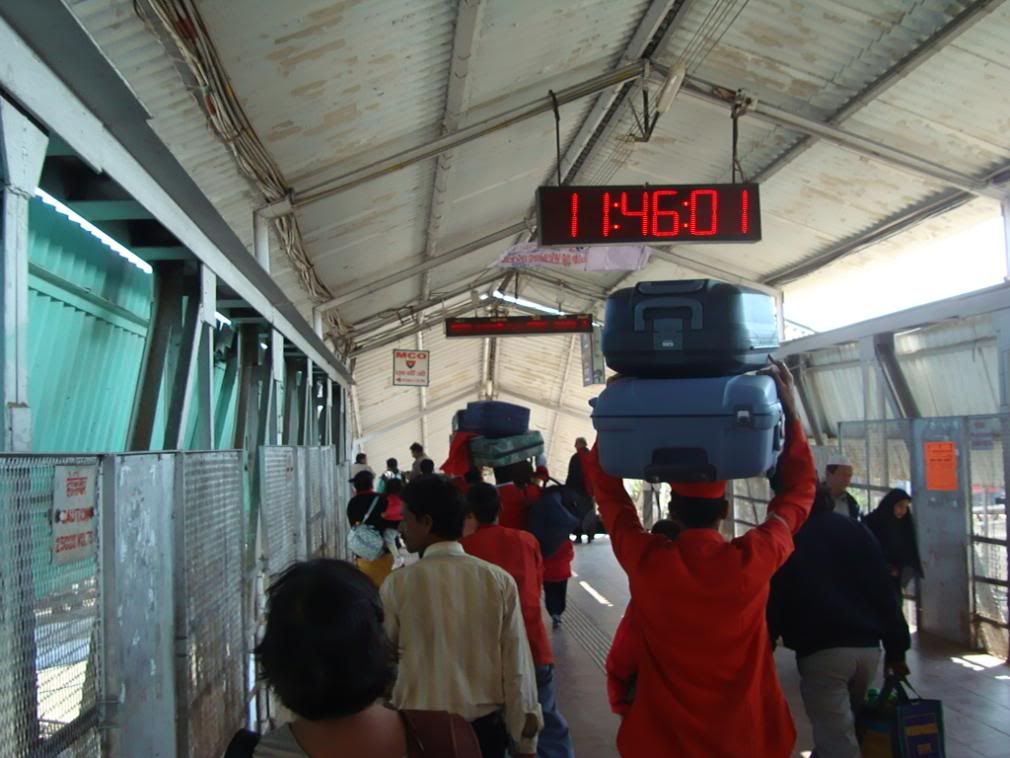
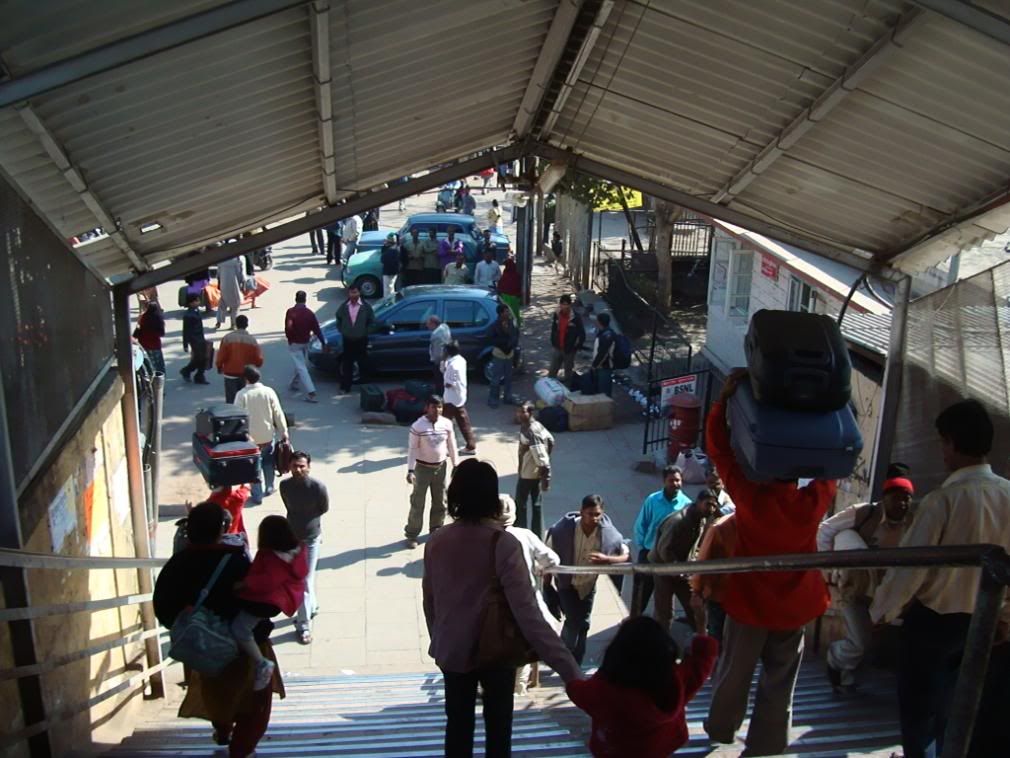
You will see one of those yellow big signs at the end of every railway platform, which announces the station in Hindi, English and the local language (in this case, Urdu). Got down, got a coolie (porter) who has got couple of suitcases on his head. What I find incongruous is the sight of an electronic clock and coolies. In the day and age where we have electronic devices and the lot, we are still relying on sheer physical labour. Finally we are now going down the platform and then down the steps to where my parents were waiting for us.
I cannot think of a better way to travel around in India than by rail. Wonderful time.
Technorati Tags: India,Transportation

No comments:
Post a Comment